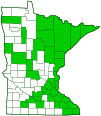snakeskin liverwort
(Conocephalum salebrosum)
Conservation • Description • Habitat • Ecology • Use • Distribution • Taxonomy
Conservation Status |
|
|||||||
| IUCN Red List | not listed |
|||||||
| NatureServe | NNR - Unranked |
|||||||
| Minnesota | not listed |
|||||||
Description |
||
Snakeskin liverwort, also called snakewort. is a large, widespread, very common, non-vascular plant (bryophyte). It occurs in throughout the temperate and boreal regions of the northern hemisphere. In the United States it occurs from coast to coast. It is common in eastern Minnesota. It is found at the sides of streams, near springs, and at the bases of wet cliffs, sandstone outcroppings, and rocks. It grows on lime rich (calcareous) soil in moist or wet areas that have full shade or dappled sun and are protected from wind. It often forms colonies of overlapping plants, sometimes creating extensive mats. The vegetative body is a large, branched, ribbon-like, more or less flat, plant body (thallus). The cells of a thallus are not differentiated into organs. It has no stem, leaves, vascular system, or true roots. The branching creates lobes that are 3″ to 9½″ (8 to 24 cm) long, ⅜″ to ⅞″ (10 to 22 mm) wide, 1 ⁄32″ (0.7 mm) thick near the center, 1 ⁄64″ (0.2 mm) at the margin. The lobes are opaque, appear leathery. The midrib is poorly defined and the margins are wavy. Younger lobes often split from the base, creating a new clonal plant. Eventually, the older lobes wither away. The upper surface is dull to shiny, hairless, and yellowish-green to dark green, darkest in the middle. It turns purple in the winter. It is covered by conspicuous raised polygons separated by narrow, darker-colored, depressions. The polygons are the upper wall of a relatively large air chamber. In the center of each polygon there is a single open pore used for gas exchange. The pore is whitish and is usually visible without magnification. Unlike in vascular plants, in which the pores can be closed, in liverworts the pores remain open. This prevents the plant from controlling evaporation. As a result, liverworts are restricted to moist and wet areas protected from sun and wind. The lower surface is light green. On each side of the midrib there is a single sparse row of 3 ⁄16″ (5 mm) long scales. Bundles of smooth, ⅜″ (10 mm) long, root-like filaments (rhizoids) along the midrib anchor the thallus to the soil. Longer rhizoids, these with small rounded projections (tubercles) extend horizontally and help to keep the thallus moist. The thallus produces a strong odor when crushed. Liverworts reproduce both sexually and asexually. Other large thallus-producing (thalloid) liverworts produce gemmae, tiny masses of cells that disperse to form new plants. Snakeskin liverwort does not produce gemmae. Vegetative reproduction occurs when a piece of the brittle thallus breaks off and is easily transported by water. Rarely, tubers develop on the underside of old thalli and produce new plants. Male and female reproductive organs are embedded in receptacles and are produced on separate plants. Colonies are often all male or all female. The structures appear on the upper surface of the thallus near the tip of a lobe, frequently on male plants, infrequently on female plants. On male plants, the receptacle is stalkless, slightly raised, and usually circular, sometimes oval or semi-circular. The male sexual reproductive organ (antheridia) is embedded in the receptacle. At maturity, the sperm is released in a jet of air. On female plants, the receptacle is a brownish, dome-shaped, sexual reproductive organ (archegonia) with several drooping lobes at the end of an erect, up to 4″ (10 cm) long stalk. It looks like a tiny umbrella. |
||
Height |
||
Prostrate: 3″ to 9½″ (8 to 24 cm) long |
||
Similar Species |
||
| The large size of this species distinguishes it from most other liverworts. | ||
Habitat |
||
Moist or wet. Streamsides, springs, cliff bases. Full shade to dappled sun. Calcareous soil. |
||
Ecology |
||
Sporulation |
||
Fall |
||
Use |
||
|
||
Distribution |
||||
|
Sources |
|||
| 6/29/2022 | ||||
Nativity |
||||
Native |
||||
Occurrence |
||||
Very common and widespread |
||||
Taxonomy |
|||
| Kingdom | Plantae (Plants) | ||
| Division | Marchantiophyta (liverworts) | ||
| Class | Marchantiopsida (complex thalloid liverworts) | ||
| Subclass | Marchantiidae | ||
Order |
Marchantiales (complex thallose liverworts) | ||
Family |
Conocephalaceae | ||
Genus |
Conocephalum | ||
This species was formerly classified as Conocephalum conicum. A morphological study of herbarium specimens published in 2005 showed that two similar but morphologically distinct species shared that classification, and that only one of those species occurs in North America. The species found in North American was given the name Conocephalum salebrosum. It occurs in throughout the temperate and boreal regions of the northern hemisphere. The other species retained the name Conocephalum conicum. It probably occurs only in Europe. The European species is larger and shinier. |
|||
Subordinate Taxa |
|||
|
|||
Synonyms |
|||
Conocephalum conicum |
|||
Common Names |
|||
cat-tongue liverwort common mushroom-headed liverwort dull snakeskin liverwort great scented liverwort mushroom-headed liverwort snakeskin liverwort snakewort |
|||
Glossary
Calcareous
Alkaline; rich in limestone; containing a high proportion of calcium carbonate.
Gemma
In mosses and liverworts: A vegetative, reproductive cell or mass of cells that detaches from the parent and can develop into a new individual. Plural: gemmae.
Rhizoid
A filament arising from the lower stem of a moss, liverwort, or alga that anchors it to a substrate.
Thallus
In lichens: The vegetative body of a lichen composed of both the alga and the fungus. In liverworts: a flat, relatively undifferentiated plant body. Plural: thalli.
Visitor Photos |
|||||
Share your photo of this plant. |
|||||
| This button not working for you? Simply email us at info@MinnesotaSeasons.com. Attach one or more photos and, if you like, a caption. |
|||||
Nancy Falkum |
|||||
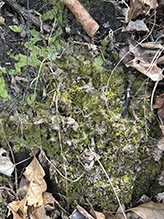 |
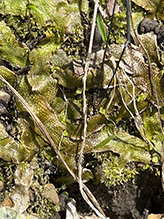 |
||||
Wendy Johnson |
|||||
Spotted in wooded, spring-fed pothole bog in maple and mixed hardwood and white pine forest. East side of Thoroughfare Creek. |
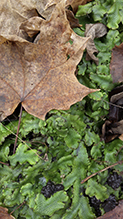 |
||||
MinnesotaSeasons.com Photos |
|||||
| Mat | |||||
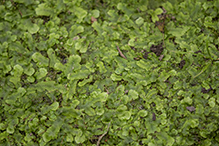 |
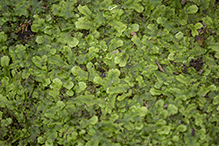 |
||||
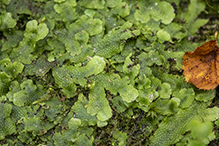 |
|||||
| Lobes | |||||
 |
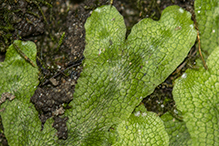 |
||||
 |
|||||
| Thallus | |||||
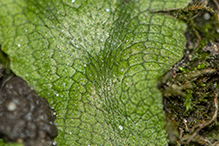 |
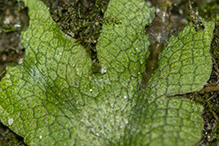 |
||||
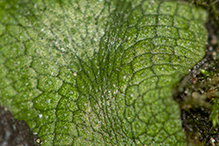 |
|||||


Visitor Videos |
|||
Share your video of this plant. |
|||
| This button not working for you? Simply email us at info@MinnesotaSeasons.com. Attach a video, a YouTube link, or a cloud storage link. |
|||
Other Videos |
|||
| A thalose liverwort in the oak creek canyon, Ouray, Colorado. Mike's thoughts on plants. |
|||
About
Oct 25, 2021 The lesser know Conocephalum salebrosum, another cool growing moss relative in this canyon. I really need to spend the day looking over the forest floor as I keep finding interesting plants. |
|||


Created: 10/2/2019
Last Updated:
